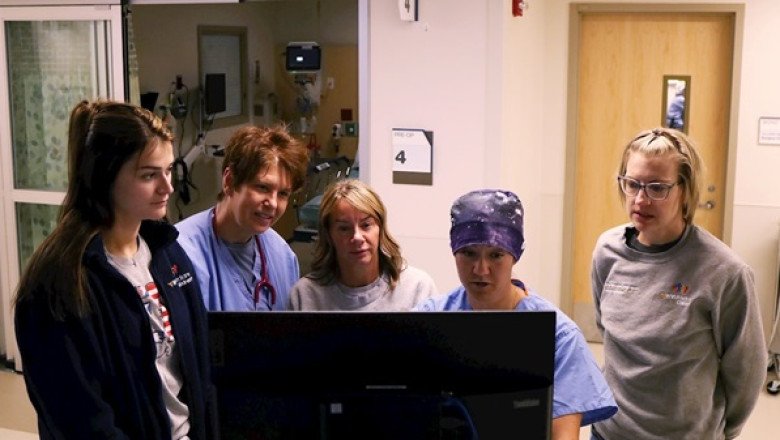
views
Vance continued, “Through this partnership, our students work toward understanding a clinical problem identified within a particular unit, review and appraise the health science literature to identify an evidence-based intervention or change to address it. They make recommendations based on the literature, develop a proposal, assist with implementing the change and then evaluate the change to determine if it was successful.”
To date, one of the most successful efforts has been Nicole Rillera’s project focusing on recovery time for children ages 2 to 10 undergoing ear tube replacements. Rillera, a nurse anesthetist student, said she met with the WVU Medicine Children’s team to review current procedures, then she began searching the literature.
“I found that children in particular have a side effect from anesthetic gases called emergence agitation,” Rillera said. “Think of a 2-year-old throwing the worst tantrum — that’s a side effect of this gas.”
In her review of the literature, Rillera found evidence to support the use of an anxiolytic medication intranasally prior to antiesthetic gases can mitigate the adverse effect. There were some initial concerns that the children would not want to take the medicine intranasally, but the nursing team quickly learned that wasn’t the case. In her first run of the pilot, Rillera found that discharge times following surgery were decreased for the pediatric patients by five to 10 minutes because they were no longer experiencing emergence agitation.
“It’s incredibly exciting,” Rillera said. “The ultimate plan is to publish the information I’m finding and if the evaluation continues to demonstrate positive outcomes, to implement policy changes at WVU Medicine Children’s. I’ve felt so welcomed and accommodated, and it’s nice to be laying the groundwork down for future students.”
“We want to want to work to enhance the patient experience and to be good partners with our colleagues,” Mahle said. “For the CRNA students who land with us, we find great value in helping them with their work and developing relationships with them well before they’re practicing members.”
Mahle said her team is always seeking ways to improve the patient experience, to improve overall metrics, and to enhance workflows.
“As the student projects have gotten underway, they have done staff education and they have been working side by side with team members to implement their interventions,” Mahle said. “Discussions between the students, myself, and our nursing teams occur regularly to ensure everyone is in lockstep with the project.”
As an academic medical center, Mahle said, “We’re in the business of teaching and learning, in addition to providing stellar clinical care. To have fresh ideas and to be able to work with someone to make patient care that much better reaffirms the fact that we’re committed to excellence.”
Mahle said this is a truly hands-on experience for the doctoral students. Regardless of the success of their projects, she sees this as a beneficial learning opportunity for everyone involved.
“They’re learning and they’re in an environment that is conducive to learning. As a student myself, I understand the value of someone willing to take on this project.”
Mahle said both sides have established great lines of communication and a willingness to learn and grow together as the relationship continues through future cohorts.
Other ongoing projects include the use of virtual reality to potentially decrease the level of anesthetic required for gastrointestinal patients, as well as the effectiveness of the intraoperative medications for the pediatric gastrointestinal population.
“The goal is to implement best practices that are sustainable and can be translatable to other practice settings,” Vance said. “The relationship with WVUM Children’s is very synergistic. The clinical experts at the site provide access and mentoring and the students get the experience of doing a lot of the legwork to address a clinical need of the partnering unit. The relationship allows students the opportunity to apply evidence-based quality improvement concepts while implementing a project that is simultaneously meaningful to the clinical unit.”
Vance said the WVU Medicine Children’s team has been incredibly accommodating and flexible during this partnership, which has helped to enhance student knowledge as they all work together on quality improvement.
Editor’s Note: Photo courtesy of WVU School of Nursing.
























Comments
0 comment